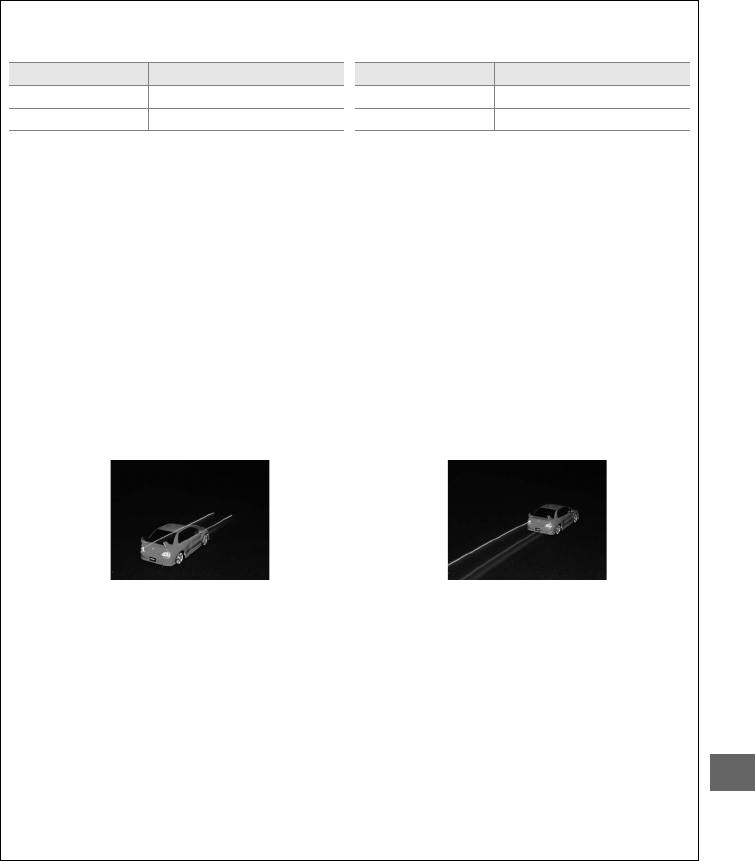
145
l
A Default Flash Modes
Default flash modes are shown below.
Mode Default Mode Default
i, k, p, n, w Auto o Auto+slow sync
s Auto+red-eye reduction 0, P, S, A, M Fill flash
A Flash Modes
The flash modes listed on the previous page may combine one or more of the following
settings, as shown by the flash mode icon:
• AUTO (auto flash): When lighting is poor or subject is back lit, flash pops up automatically
when shutter-release button is pressed halfway and fires as required.
• Y (red-eye reduction): Use for portraits.
Red-eye reduction lamp lights before flash fires,
reducing “red-eye.”
• j (off): Flash does not fire even when lighting is poor or subject is back-lit.
• SLOW (slow sync): Shutter speed slows automatically to capture background lighting at night
or under low light.
Use to include background lighting in portraits.
• REAR (rear-curtain sync): Flash fires just before shutter closes, creating a stream of light behind
moving light sources (below at right).
If this icon is not displayed, flash will fire as the
shutter opens (front-curtain sync; the effect this produces with moving light sources is
shown below at left).
Front-curtain sync Rear-curtain sync
D The Built-in Flash
Use with lenses with focal lengths in FX format of 24–300 mm (16–300 mm in DX format;
0 288).
Remove lens hoods to prevent shadows.
The flash has a minimum range of 0.6 m
(2 ft) and can not be used in the macro range of zoom lenses with a macro function.
i-TTL
flash control can be used at ISO sensitivities between 100 and 6400.
At values over 6400, the
desired results may not be achieved at some ranges or aperture settings.
If the flash fires in continuous release mode (0 83), only one picture will be taken each time
the shutter-release button is pressed.
The shutter release may be briefly disabled to protect the flash after it has been used for
several consecutive shots.
The flash can be used again after a short pause.


















